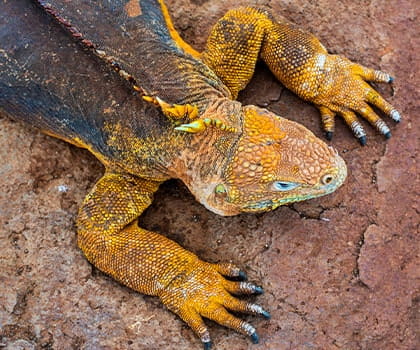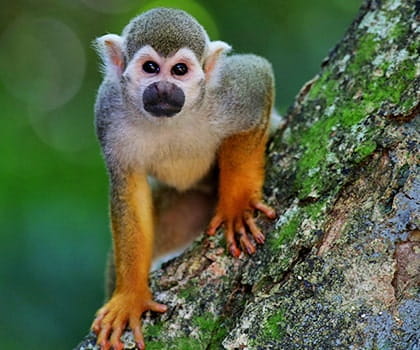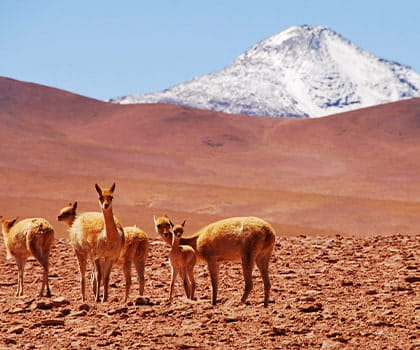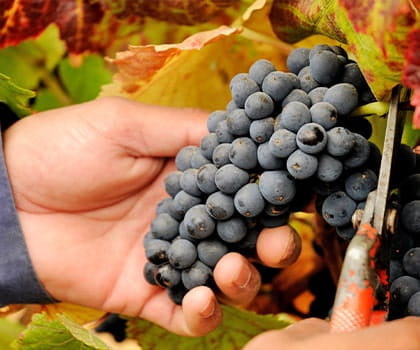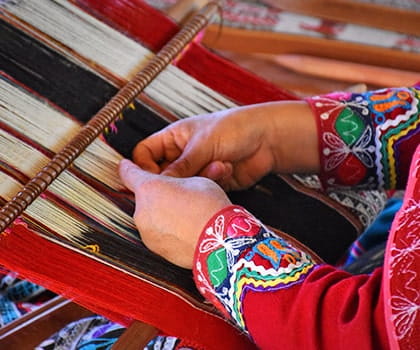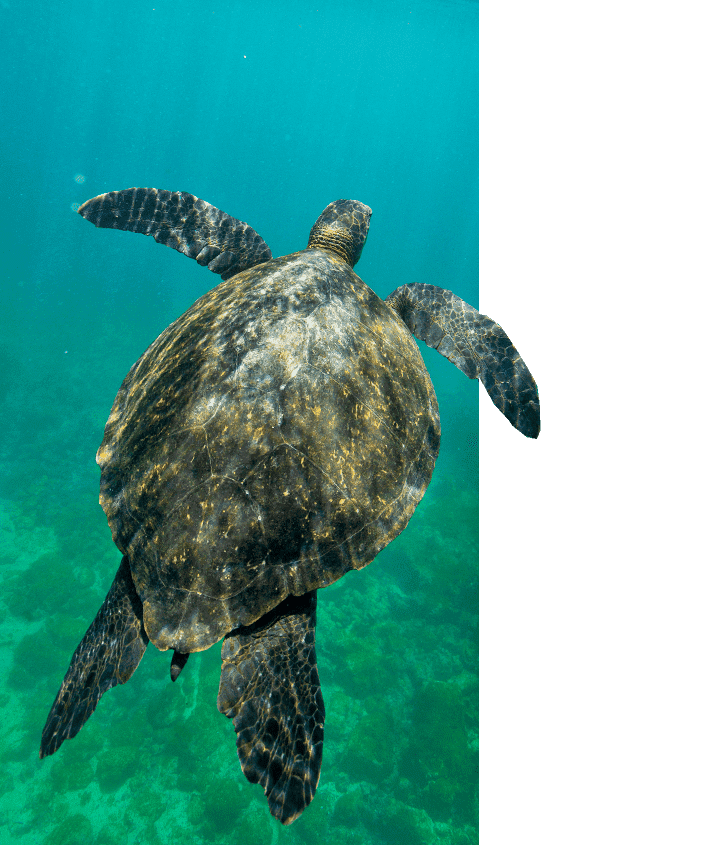
Despite their common appearance on the titular archipelago, Galapagos green sea turtles have no shortage of misunderstandings surrounding their watery existence. For example, even though they’re called the gentle giants of the sea, these turtles are much more active travelers than their mellow gliding through the water might suggest. In reality, they have a busy life full in search of food, and return from long migrations to their favorite nesting spots on the Galapagos Islands’ beaches to lay their eggs.
Movies, television, and a secretive life below the waves have contributed a lot to the mythology of these amazing creatures, and we’re untangling 7 popular myths about the versatile and vibrant life of the Galapagos green sea turtle.
Myth #1: Their Skin is Actually Green
Don’t be fooled by the name! Galapagos green sea turtles, known scientifically as Chelonia mydas, aren’t actually green. Their title actually refers to the color of the fatty tissue beneath their shells. The primary cause for their body fat’s green hue? A steady diet of algae and underwater veggies.
There are two morphotypes of the green sea turtle: yellow and black. The yellow morph turtles have more oval-shaped carapaces with an orange coloration and radiating yellow patterns. The black morph turtles can be distinguished by their triangular or conical carapace that varies in color between light brown, dark brown, black, or dark green.
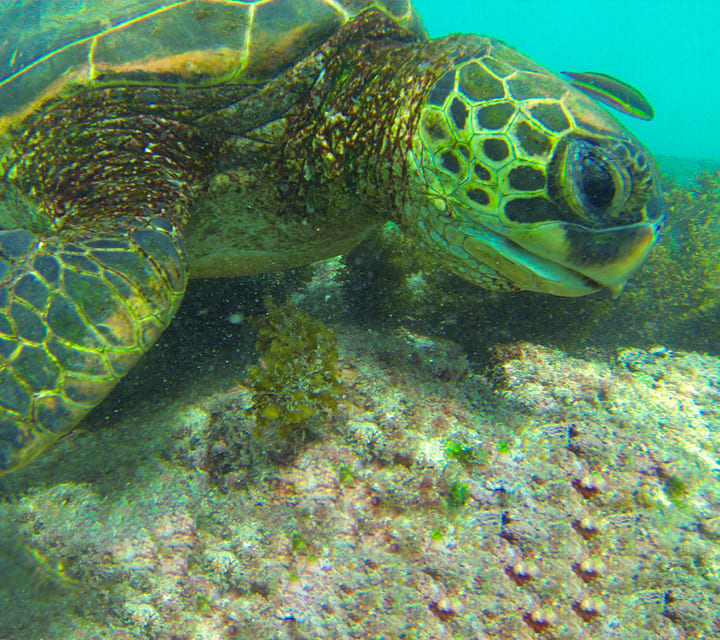
Colors can also vary depending on their age and geographical location. For example, juvenile green sea turtles have mottled carapaces with streaks and spots, which gradually fade as they mature into adults. Some populations are known for an entirely different hue, such as those found in warmer tropical waters. These “goldies” often sport stunning golden-yellow carapaces.
Myth #2: They’re the Only Turtle That Lives in the Galapagos
The Galapagos green sea turtle isn’t the only species in the Galapagos, and the archipelago is host to a variety of ocean-going turtles besides our fabled friend. It is, however, the only turtle that nests on the islands, but you’ll come across many others —such as the Hawksbill, the Olive Ridley, the Leatherback, the Loggerhead, the Flatback, and the Pacific Ridley— in the surrounding waters.
When you’re looking for some of these other inhabitants, it’s easiest to check for one or two key differences. A Hawksbill, for instance, has a distinctive carapace that showcases overlapping and serrated scales. And while the Olive Ridley might be the smallest among all the turtle species in the Galapagos, its unique charm and vibrant olive hue will surely win you over.
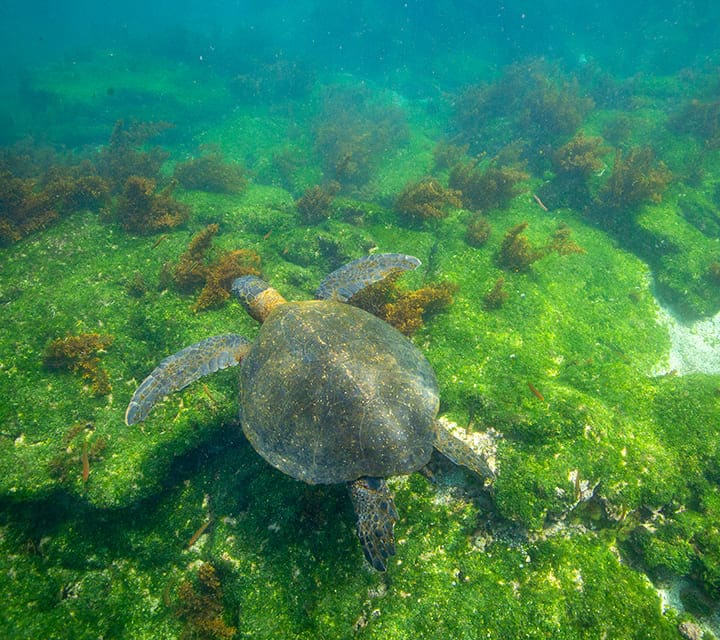
Myth #3: They Sit on Their Eggs Like Chickens
Nope! Unlike birds, turtles do not sit on their eggs to keep them warm. After laying their eggs in a single nesting event (which can last up to three hours), the female turtles cover them with sand to protect them from predators. Then they return to the water, and that’s the last they’ll see of their clutch.
The eggs, surrounded by the sun-baked sand, gradually progress through the incubation process which lasts for about 45 to 70 days. At the end of that time, the hatchlings dig their way to the surface and scramble to the water, beginning their epic journey of survival all on their own.
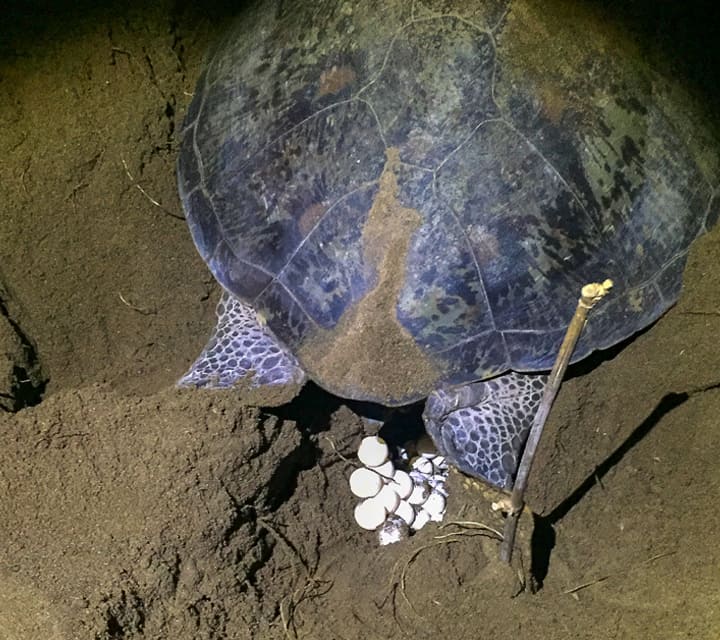
Myth #4: They Only Eat Seagrass
Galapagos green sea turtles, like people, aren’t content with eating only one thing. They actually have a fairly varied diet, and (also like us) their favorite snacks vary a lot depending on their age.
Adult green sea turtles are herbivorous, and mainly content with seagrasses and algae. But juvenile turtles are omnivorous, and often eat crustaceans, insects, and worms in addition to plants. Despite the fact that juveniles are more opportunistic eaters, one thing is clear: the feeding grounds play a major role in what they eat.
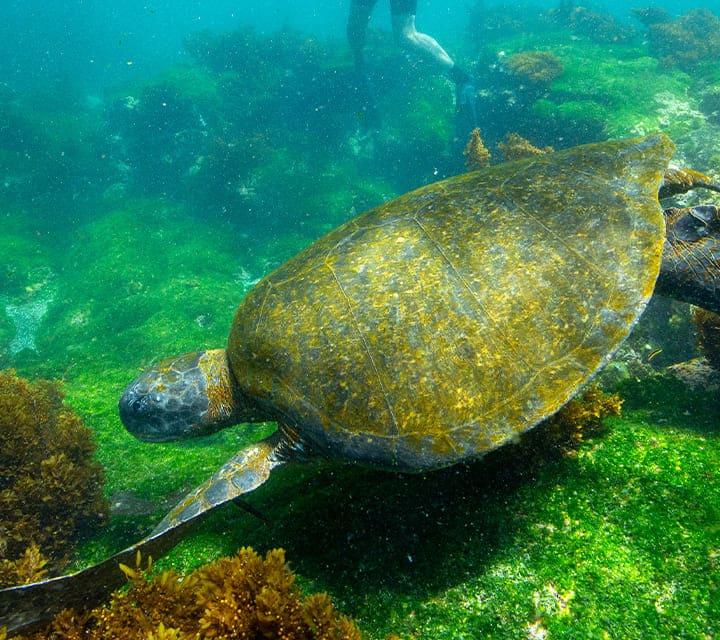
Because they’re highly migratory and willing to travel long distances to find food, green sea turtles often eat whatever they find along the way until they arrive at a tasty sea garden of their regular fare. The next time you’re on board a Galapagos luxury cruise, you might witness one of these creatures speeding by on their way to the next meal!
Myth #5: Their Huge Size Makes Them Slow
The belief that the massive size of Galapagos green sea turtles hampers their speed is a common but fair misconception. After all, if you’ve witnessed any kind of turtle ponderously traversing the land, you might imagine they’re just as slow in the water. With the most robust specimens tipping the scales at 280 lbs, their physiques are actually highly tuned for marine mobility. All that mass is due to their muscular flippers and aerodynamic shells, which they use to propel themselves at speeds of up to 35 miles an hour!
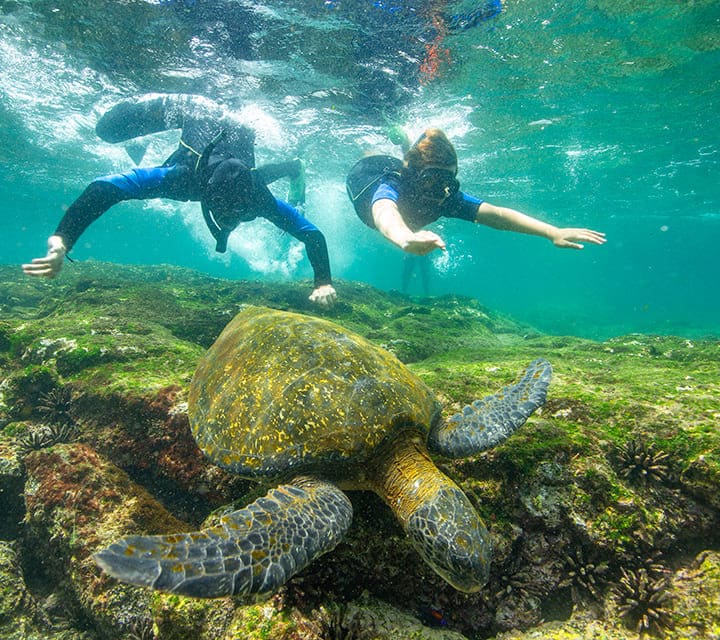
Myth #6: They’re the Biggest Sea Turtle in the World
While it’s true that Galapagos green sea turtles are behemoths in their own right, they’re not quite as big as Leatherback sea turtles. In fact, Leatherbacks are much larger, weighing up to 1,100 pounds and measuring nearly 6 feet in length.
The variance in size, habitat, behavior, and dietary habits across turtle species paints an engaging picture of their individual ecological purposes. For instance, while Galapagos green sea turtles mostly embrace an herbivorous diet, aiding in the control of marine vegetation, the Leatherback regulates the jellyfish population. Each plays a vital role in maintaining a balance in the marine food web.
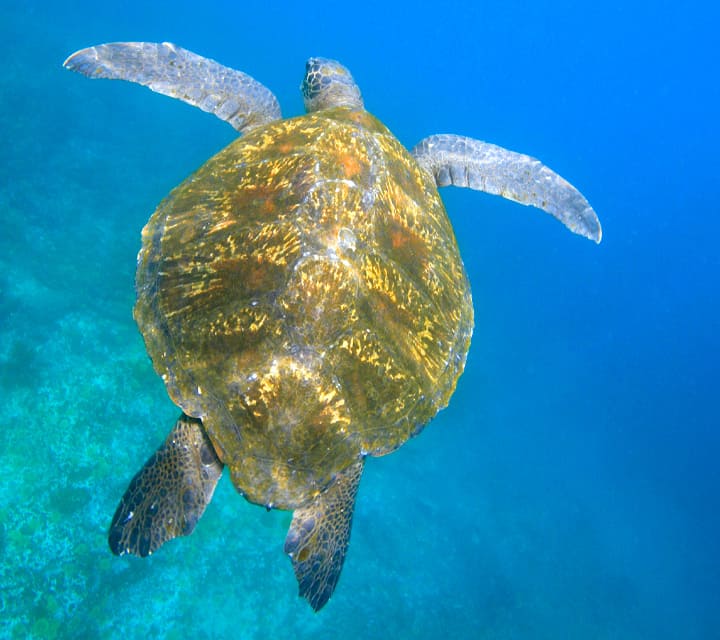
Thankfully, we can appreciate the unique traits of different turtle species in their context. And in the Galapagos, you’ll have an intimate opportunity to observe nearly all the major turtle species in person.
Myth #7: They’re Not a Protected or Endangered Species
Unfortunately, all species of green sea turtles are under threat. They are listed as an endangered species with a global population of approximately 85,000 to 95,000 nesting females. Conservationists consider this to be cause for significant concern, and various organizations and governments are actively working to protect the species.
One of the challenges these turtles face is climate change. Increasing temperatures can actually alter the sex determination of turtle hatchlings, with warmer sands leading to more females than males. This skewed gender ratio may drastically affect future turtle populations, leading to even smaller numbers. On top of that, rising sea levels cause nests to flood with water prematurely, causing eggs to hatch before infant turtles are fully formed.
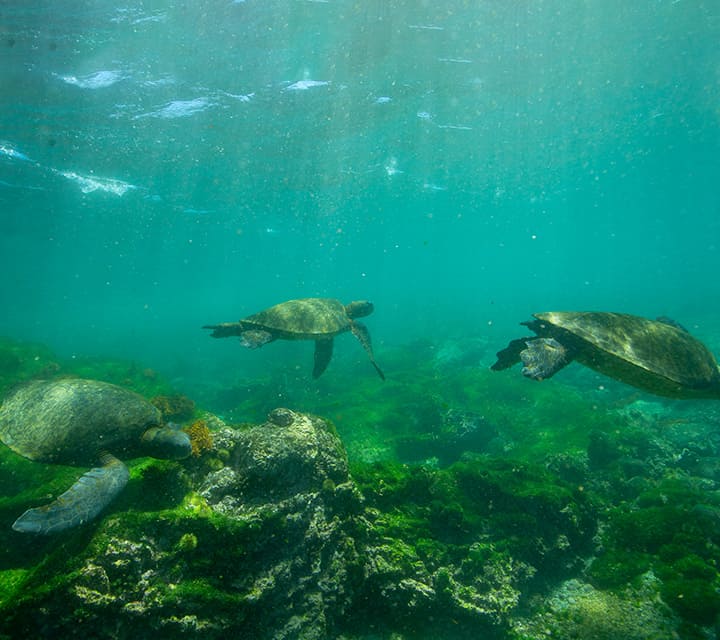
Meanwhile, many hatchlings don't survive because of human activity like fishing or development along coastal areas. Fishing activity can also prevent nesting females from making it ashore to lay eggs in the first place, and commercial fishing nets often trap them during their journey back home.
The Real Galapagos Green Sea Turtle
So, what have we learned from our deep dive into the world of the Galapagos green sea turtle? Let's recap:
- “Green” sea turtles aren’t green on the outside. They’re only green under their shells, which is caused by their diet.
- Green sea turtles build nests in many locations. The Galapagos Islands are also home to many turtle species.
- Green sea turtles bury eggs on sandy beaches, which get warm and eventually hatch the baby turtles.
- Juvenile turtles sometimes eat meat. Adult turtles travel far in search of food, though algae and seagrass are their favorites.
- Even though they’re big, these turtles are great swimmers and can reach high speeds underwater.
- While large, they’re not the largest turtles. They’re still a special part of the food chain.
To learn even more & go into more depth: Galapagos Green Sea Turtles
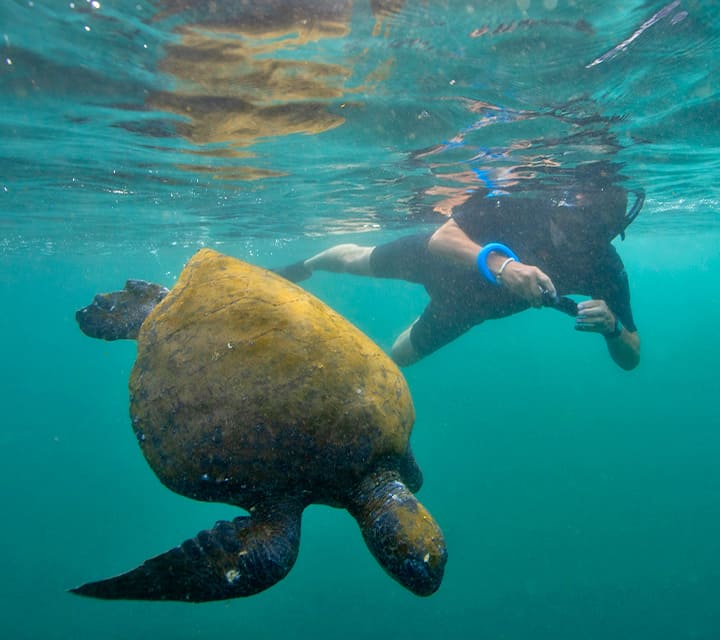
Explore the Galapagos with Quasar
Don’t stop your journey of marine life here! A Quasar Expeditions cruise to the Galapagos pairs luxury and adventure on private yachts to these unique and beautiful islands. Keep discovering more about the remarkable animals beneath the waves, and continue challenging your assumptions in style. Remember: reality can be even more marvelous than myths, so always explore and ask questions!

